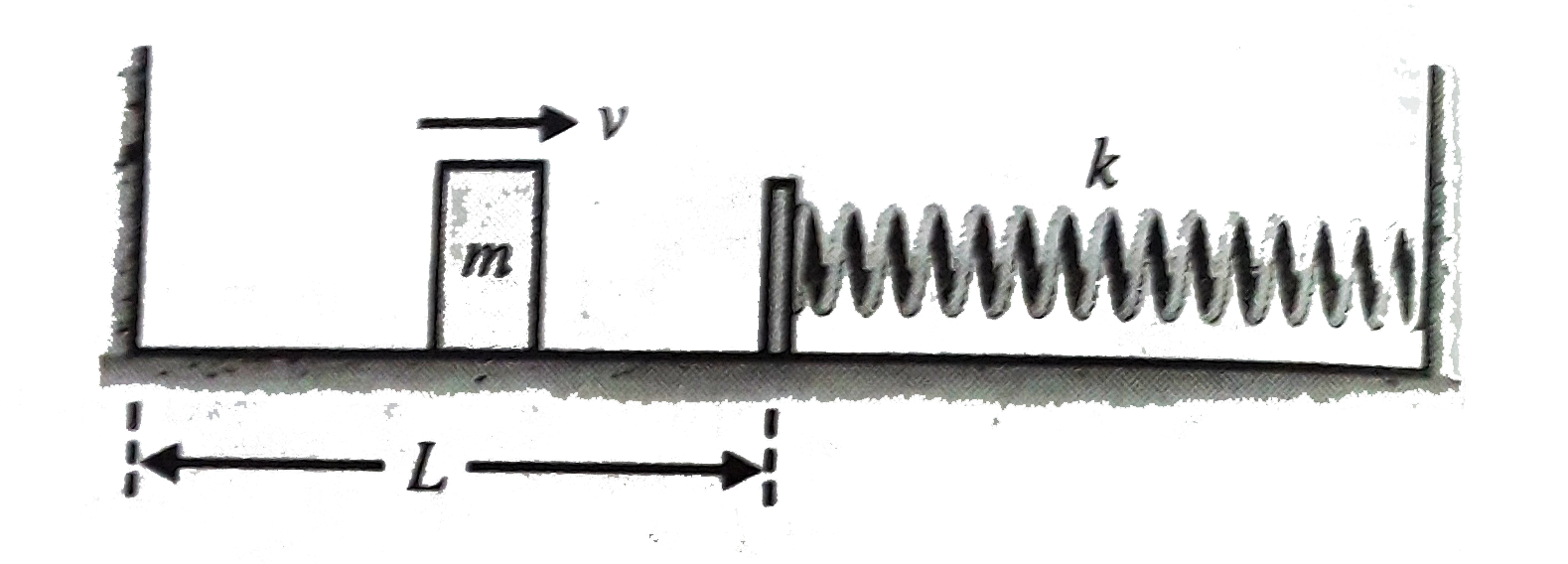Statement-1: Two identical conincal pipes shown in figure have a drop of water. The water drop tens to move towards tapered end.
Statement-2: Excess pressure is directed towards centre of curvature and inversely proportional to radius of curvature. Net excess pressure is therefore, directed towards tapered end. So the water drop tends to move towards tapered end.
_E01_133_Q01.png)
Statement-1, is true, Statement-2 is true, Statement-2 is correct explanation for statement-1
Statement-1 is true, statement-2 is true, statement-2 is NOT a correct explantion for statement-1
statement-1 is true, statement-2 is false
statement-1 is false statement-2 is true
The correct Answer is:A
Step by step video & image solution for Statement-1: Two identical conincal pipes shown in figure have a drop of water. The water drop tens to move towards tapered end. Statement-2: Excess pressure is directed towards centre of curvature and inversely proportional to radius of curvature. Net excess pressure is therefore, directed towards tapered end. So the water drop tends to move towards tapered end. by Physics experts to help you in doubts & scoring excellent marks in Class 11 exams.
Updated on:21/07/2023Topper's Solved these Questions
- ELASTICITY, SURFACE TENSION AND FLUID MECHANICSBOOK - ALLENCHAPTER - ELASTICITY, SURFACE TENSION AND FLUID MECHANICSEXERCISE - Exercise 3 (Comprehension based questions)
24 Videos
- ELASTICITY, SURFACE TENSION AND FLUID MECHANICSBOOK - ALLENCHAPTER - ELASTICITY, SURFACE TENSION AND FLUID MECHANICSEXERCISE - Exercise 4 A (Elasticity)
7 Videos
- ELASTICITY, SURFACE TENSION AND FLUID MECHANICSBOOK - ALLENCHAPTER - ELASTICITY, SURFACE TENSION AND FLUID MECHANICSEXERCISE - Exercise 2 (One or more than one correct answer)
53 Videos
- CENTRE OF MASSBOOK - ALLENCHAPTER - CENTRE OF MASSEXERCISE - EXERCISE-V B
19 Videos
- ERROR AND MEASUREMENTBOOK - ALLENCHAPTER - ERROR AND MEASUREMENTEXERCISE - Part-2(Exercise-2)(B)
22 Videos
Similar Questions
A spherical drop of water has 2.5 mm radius. If the surface tension of water is 70×10−3 N m−1, then the excess pressure inside the drop is
View SolutionA body moves in a curved path as show :

Statement -1 : Its acceleration vector cannot be →a1 but it may be →a2 .
Statement -2 . The normal acceleratin is awlays directed towards the centre of curvature.
View Solution
Knowledge Check
One end of string of length l is connected to a particle on mass m and the other end is connected to a small peg on a smooth horizontal table. If the particle moves in circle with speed v the net force on the particle (directed toward centre) will be (T reprents the tension in the string):
ATBT−(mv)2lCT+mv2lD0
The excess pressure inside an air bubble of radius r just below the surface of water is P1. The excess pressure inside a drop of the same radius just outside the surface is P2. If T is surface tension then
View SolutionFind the excess pressure inside a liquid drop of radius 2 cm, if the surface tension of water is 0.073 N m−1
View SolutionWhat should be the radius of a water drop so that the excess pressure inside it is 0.2 atm? Surface tension of water is 72×10−3N/m?
View SolutionOne end of string of length l is connected to a particle on mass m and the other end is connected to a small peg on a smooth horizontal table. If the particle moves in circle with speed v the net force on the particle (directed toward centre) will be (T reprents the tension in the string):
View SolutionA horizontal cylinderical tank 6πm in diameter is half full of water. The space above the water is filled with a pressurized gas of unknown refractive index. A small laser can move along the curved bottom of the water and aims a light beam towards the centre of the water surface. When the laser has moved a distance s=1m or more (measured from curved face) from the lowest point in water, no light enters the gas. The refractive index of gas is (μwater=4/3)

View SolutionFigure shown an imaginary cube of edge L/2. A uniformly Charged rod of length L moves towards left at a small but constant speed v. At t=0, the left end just touches the centre of the cube opposite it. Which of the graphs shown in figure represents the flux of the electic field through the cube as the rod goes through it?

View Solution
A spring having a spring constant k is fixed to a vertical wall as shown in Fig. A block of mass m moves with velocity v torards the spring from a parallel wall opposite to this wall. The mass hits the free end of the spring compressing it and is decelerated by the spring force and comes to rest and then turns the spring is decelerated by the spring force and comes to rest and then turns back till the spring acquires its natural length and contact with the spring is broken. In this process, it regains its angular speed in the opposite direction and makes a perfect elastice collision on the opposite left wall and starts moving with same speed as before towards right. The above processes are repeated and there is periodic oscillation.
Q. What is the time period of oscillation ?
View Solution
